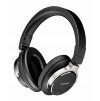Headphones
Every music lover prefers different headphones. But the most popular with everyone are ? wireless headphones that give you a sense of freedom. If you want to forget about having any headphones in your ears at all, reach for true wireless headphones. They'll be great for sports, too. Even when you're running, you'll appreciate ? sports headphones with a cable. Just try them out. And those who like to be the first to reach for modern trends must definitely try ? Swissten's Bone Conduction wireless headphones, which use sound transmission through the cheekbones. So you don't have them on your ears at all. Do you often get behind the wheel? Then do you need a headset or any ? headset with a microphone.
There's always a cable to go with the headset. Preferably ? audio cable or a handy adapter from ? USB-C or Lightning to 3.5mm jack. Thanks to it , you can plug your old headphones into a modern mobile phone and save money on new ones.
Do you know how to connect wireless headphones to a PC? And ? how does Bluetooth handsfree work in the car? We do, and we're happy to share our knowledge on the blog. And, completely free of charge, we'll also give you tips on how to boost your sports performance with the right headphones. It's worth the few minutes of reading. What do you think?
? FREE SHIPPING on 499 Kč ? ITEMS IN STOCK ? RETURN WITHIN 30 DAYS ? BRANDED PRODUCTS
-
 Apple
Apple
-
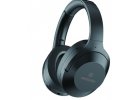 Wireless
Wireless
-
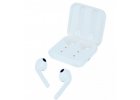 True Wireless
True Wireless
-
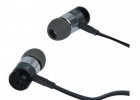 In-Ear
In-Ear
-
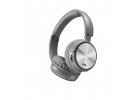 Over-Ear
Over-Ear
-
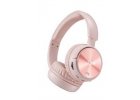 Gaming
Gaming
-
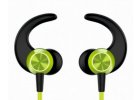 Ear Loop
Ear Loop
-
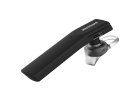 With Microphone
With Microphone
-
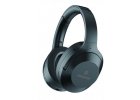 For PC
For PC
-
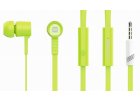 For Phone and Tablet
For Phone and Tablet
-
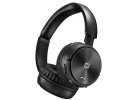 For TV
For TV
-
 Sport
Sport
-
.jpg) Stojánky na sluchátka
Stojánky na sluchátka
Bestsellers

wired headphones with integratedmicrophone cable length 1.2 m minimalist design with earbuds tangle-resistant flat cable Lightning connector Ambient noise cancellation...
How to choose the best headphones in 2024?
Definitely don't just bet on the look of the headphones. Although that's important too, at least for your wellbeing. But it's much more important to choose the right type of headphones to suit your needs, and for a high listening comfort, also focus on the technical specifications, design features and shape of the earcups.
#ShowMore#
What types of headphones are available to choose from?
I'm sure you've encountered many of these, but at first glance you had no idea what their features were. Here is a brief summary:
Wireless headphones
Because of the integrated battery, they need to be recharged, but on the other hand they allow free movement without the constraints of cables. The wireless headphones can be used for listening to music, playing games or working. According to the type of transmission technology, wireless headphones can be divided into:
- True Wireless headphones,
- Bluetooth headphones,
- Radio frequency headphones,
- Cheekbone headphones.
While radio-frequency headphones are more suitable for demanding users due to their high range but also their price, Bluetooth technology clearly leads the way in wireless headphones. The connection range of Bluetooth headphones is in the range of meters, which is fully sufficient for use with a phone, but also a computer. True Wireless headphones are a kind of subset of Bluetooth headphones, which is specific in that each of the earpieces can function completely independently and is not connected to the other by a cable or bridge. The most common design of earpieces in True Wireless headphones are earbuds or earbuds.
Computer headphones
As the name suggests, these headphones are used when working with a personal computer. Therefore, they can also be wired. However, the emphasis with computer headphones is on comfort, because it is assumed that you will wear them for longer periods of time, for example, while working. A much better choice than earbuds or earbuds in this case are around-ear headphones. In terms of use, computer headphones can be divided into:
- Office headphones,
- Gaming headsets.
Office headsets are designed for long term work. Therefore, they are characterized by their light weight, wired design and a headphone bridge. They are equipped with a microphone that allows you to make phone calls. They are most often used in call centres or in regular offices for video conferencing purposes.
The gaming headset is lightweight, has comfortable earpieces and its technical features allow for a faithful reproduction of the bass, which enhances the perfect gaming experience. They can be both wired and wireless, most often around the ears or on the ears.
Headphones for TV
You can get this type of headphones in both wireless and wired versions. It depends on how modern your TV is at home and whether it can work with Bluetooth audio. If so, you can pair it with a regular phone headset as well. If you have an older type, opt for wired headphones that connect via a 3.5mm jack. Make sure the cable is long enough, with at least two metres of space between the TV and the viewing location.
Headphones for TV should be comfortable, so it is better to choose over-ear or over-the-head headphones than earbuds or earbuds.
Sports headphones
With sports headphones, extreme demands are made especially on stability and retention in the ear. Light weight and resistance to water and sweat are also important. For this purpose, it is particularly worth looking at the second digit in the IPxx protection rating, which should be as high as possible. In terms of connection to your phone, you can choose wired sports headphones with a 3.5mm jack or Lightning connector, or the more popular wireless ones, which will not restrict you at all during sports. The most popular design of sports headphones are in-ear headphones, i.e. earbuds or earbuds that are lightweight. Some athletes also prefer behind-the-ear headphones, but they must fit well.
The shape of the headphones according to the way they are attached to the ear
In terms of the design of the earbuds themselves, there are 4 basic types of headphones:
- In-ear headphones
These are professionally referred to as intraaural. They are designed to be inserted directly into the ear canal. You can meet with two designs - earbuds and earbuds. The earbuds are inserted deep into the ear canal and thanks to this there is a perfect suppression of the surroundings. The earplugs, on the other hand, are held in the ear canal, so they are more suited to situations where you need to be able to perceive your surroundings at least a little bit.
- Earmuffs
This type of headphones is, as the name suggests, attached to the ears. In the literature you will come across the term supraaural headphones. Their disadvantage is less comfort during prolonged wearing and also less ability to deflect ambient noise.
- Around-ear headphones
These headphones eliminate the disadvantages of the previous type. They wrap around the ear from the outside and thus perfectly cancel out the surrounding environment. At the same time, they can be used for long periods of time as they do not press on the ear. They are more suitable for static listening at home, as studio or gaming headphones. They are not very suitable for frequent carrying.
- Behind-the-ear headphones
Behind-the-ear headphones are a kind of transition between in-ear and on-ear headphones. In fact, some models of in-ear headphones also come with clips that anchor behind the back of the ear to help keep the earbuds or earbuds in the ear better.
There are also cheekbone headphones, but they are more of a fashion fad that is not very often used yet. We also have one in our offer. Meet the Swissten Bone Conduction headphones. They work on the principle of transmitting vibrations from the cheekbone to the tiny bones of the middle ear.
Headphone specifications
Equally important parameters of the headphones are their technical characteristics, i.e. how the headphones sound. From this point of view, 3 parameters are important:
- Sensitivity
This characteristic is essential for the maximum volume of the headphones. It is in fact linked to their acoustic performance. Therefore, the higher the sensitivity in decibels (dB) the headphones have, the better they will sound. Focus on the higher sensitivity associated with low impedance if you are looking for headphones to go with your phone or MP3 player, which are devices that do not have a high sound output per se.
- Impedance
This is given in ohms (?) and its value will affect how loud the headphones will play at a particular voltage output. In electrical terms, it is actually an electrical resistance. The higher the impedance the headphones have, the less loud they will play, but the more accurate the sound reproduction will be. Even with this parameter, it is important to take into account the device you want to connect the headphones to. The lower the output power of the device you assume, the lower the impedance the headphones should have. For example, mobile phones, music players or laptops require headphones with low impedance. With TV or studio headphones, you can afford a higher impedance and enjoy the sonic detail.
- Frequency range
This parameter affects what frequencies the headphones will be able to play. It is specified in hertz (Hz) or multiples thereof (kHz). The human ear is capable of distinguishing frequencies from approximately 20 Hz to 20 kHz. However, this range decreases with age. The indication of the frequency range of headphones should be supplemented by the value of the attenuation causing a decrease in loudness at the edges of their frequency range. The lower the better. The ideal attenuation is within 3 dB.





